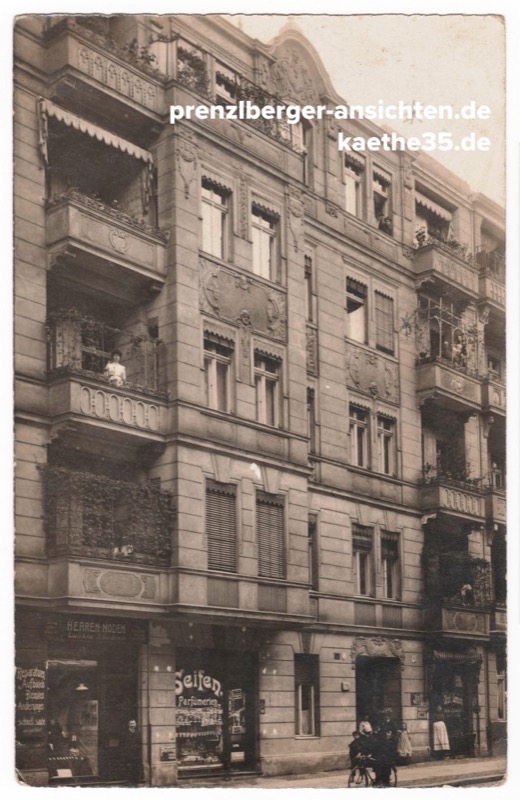jewish life in Prenzlauer Berg, Part 1
Jews´ House
Since May 2019, there is a second doorbell board at the house Käthe-Niederkirchner-Str. 35 in Bötzow quarter. There the names of former residents of the house from the time of the Nazi dictatorship can be read. During this time, Käthe 35 was a so-called "Judenhaus".
When Simon Lütgemeyer moved to the Bötzow quarter at the end of the 1990s, things looked completely different than they do today: the fabric of 75% of the houses was worn out, and parts of the neighborhood had only recently become an official redevelopment area. A few years later, meanwhile living in family, Stolpersteine were laid in the neighboring house for the couple Friede. Also present was photographer Harf Zimmermann, who brought a photo of Käthe 35 from 1986. On this photo a woman was standing on the balcony, on "their balcony".
This was the starting point for a research about the residents of Käthe 35, which lasted several years and led in 2019 to a celebration of descendants of former residents in Käthe 35 (for the inauguration of the bell board). It was also unknown until then that Käthe 35 was a so-called "Judenhaus". In Berlin alone, it can be assumed that there were about 3,000 so-called "Judenhäuser" in which Germans of Jewish origin were cooped up.
"Judenhaus" in the language of the authorities of the National Socialist German Reich referred to residential buildings of (former) Jewish ownership into which only Jewish tenants and subtenants were forcibly assigned. Who was considered a Jew in this context was regulated in §5 of the "First Ordinance to the Reich Citizenship Law" of November 14, 1935; so-called privileged mixed marriages were excluded.
This freed up living space for the so-called German-blooded population at the expense of the Jews. The measure facilitated discrimination against Jewish residents and interrupted established neighborly relations.
The term "Judenhaus" was adopted into the everyday language of the 'Third Reich'. As an alternative to the National Socialist term, the term "ghetto house" is also used today.
The "Ordinance on the Use of Jewish Property" of February 31, 1938 obliged Jewish homeowners to sell their properties. Hermann Göring announced on December 28, 1938, restrictively, that the "Aryanization" of businesses and stores was a priority, and that the "Aryanization" of house property was to be "placed at the end of the overall Aryanization".
It was namely desired "... to proceed in individual cases, if possible, in such a way that Jews would be grouped together in one house, insofar as the rental relationships would permit this."
The "Law on Tenancies with Jews" of April 30, 1939 relaxed tenant protection for Jews. Legal commentaries on the "special housing law for Jews" stated as justification: "It is contrary to National Socialist legal sensibilities if German nationals have to live together with Jews in one house."
M. Steinbach, Oct. 2021
Source: Documentation "Käthe 35" by Simon Lütgemeyer (www.kaethe35.de)

